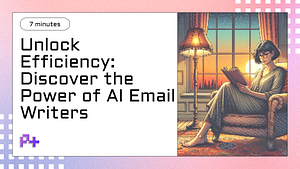Summary
- 1. Introduction to Transcription Services: What You Need to Know
- 2. Comparing Automated vs. Human Transcription: Pros and Cons
- 3. Our Top Picks for the Best Transcription Services of 2025
- 4. How to Choose the Right Transcription Service for Your Needs
- 5. Tips for Getting the Most Accurate Transcriptions and Editing Them
1. Introduction to Transcription Services: What You Need to Know
Transcription services have become an essential tool for a variety of industries, including education, healthcare, media, and business. At their core, these services convert spoken language into written text, enabling organizations to preserve important discussions, enhance accessibility, and streamline workflows. With the rise of technology, particularly automated transcription, the landscape of transcription services has evolved significantly. Automated transcription utilizes advanced algorithms and artificial intelligence to transcribe audio and video content quickly and accurately, making it a popular choice for users seeking efficient solutions.
One of the primary advantages of automated transcription is its speed. Traditional transcription methods can be time-consuming, often requiring human transcribers to listen to recordings and type them out manually. In contrast, automated transcription can deliver results in a matter of minutes, allowing users to access their content faster. This is especially beneficial for businesses and professionals who need to meet tight deadlines or require immediate access to meeting notes, interviews, or conference calls. Additionally, the cost-effectiveness of automated transcription services makes them an attractive option for organizations looking to manage their budgets without compromising on quality.
While automated transcription offers numerous benefits, it is essential to recognize its limitations. Factors such as audio quality, accents, and background noise can impact the accuracy of transcriptions generated by AI. Therefore, users should consider the context in which they will use these services. For instance, while automated transcription may be sufficient for internal meetings or informal content, professional settings that demand high accuracy might still require human intervention. In summary, understanding the capabilities and limitations of transcription services—particularly automated transcription—can help users make informed decisions that best meet their needs and enhance their overall productivity.
2. Comparing Automated vs. Human Transcription: Pros and Cons
When considering transcription services, the debate between automated transcription and human transcription is crucial. Automated transcription utilizes advanced algorithms and artificial intelligence to convert speech into text quickly and efficiently. The primary advantage of this method is speed; automated systems can process recordings in real-time or near real-time, making them ideal for users needing quick turnaround times. Additionally, automated transcription services are often more cost-effective than their human counterparts, allowing businesses and individuals to save on expenses, especially for large volumes of audio or video content. However, these systems can struggle with accuracy, particularly in cases involving heavy accents, background noise, or specialized jargon.
On the other hand, human transcription offers a level of nuance and understanding that automated systems often lack. Professional transcribers can interpret context, recognize different speakers, and accurately transcribe complex dialogues, leading to a higher overall accuracy rate. This is particularly beneficial for industries that require precise transcription, such as legal or medical fields, where misinterpretation can have serious consequences. However, the trade-off for this accuracy is time and cost; human transcription can take significantly longer to complete and is typically more expensive than automated solutions. For businesses or individuals with a tight deadline or budget, this can pose a significant challenge.
Ultimately, the choice between automated and human transcription depends on the specific needs of the user. For those requiring speed and lower costs, automated transcription may be the way to go, especially for less critical tasks or when dealing with large volumes of content. Conversely, if accuracy and context are paramount, especially in sensitive or specialized fields, human transcription is the preferred option despite the higher cost and longer turnaround time. By weighing these pros and cons carefully, users can select the transcription method that best aligns with their goals and requirements.
3. Our Top Picks for the Best Transcription Services of 2025
In 2025, the landscape of automated transcription services has evolved significantly, driven by advancements in artificial intelligence and machine learning. Our top picks for the best transcription services reflect this evolution, offering users a balance of accuracy, affordability, and user-friendly features. One standout option is Rev, known for its impressive 99% accuracy rate when utilizing human editors alongside its automated services. This hybrid approach ensures that users receive high-quality transcriptions promptly, making it ideal for professionals needing reliable documentation for meetings, interviews, or academic research. Rev's straightforward interface and fast turnaround times make it a top choice for businesses and individuals alike.
Another excellent option is Otter.ai, which has gained popularity for its robust automated transcription capabilities. Utilizing cutting-edge AI technology, Otter.ai not only provides accurate transcripts but also features real-time collaboration tools, making it perfect for teams working remotely. The service allows users to highlight key points and add comments directly within the transcript, enhancing productivity and ensuring that critical information is easily accessible. With its affordable pricing plans and seamless integration with tools like Zoom and Google Meet, Otter.ai has solidified its place as a leader in the transcription market for 2025.
Lastly, Sonix deserves mention for its comprehensive features and user-friendly platform. Offering automated transcription in over 40 languages, Sonix caters to a diverse range of users, from international businesses to content creators. Its powerful editing tools streamline the process of refining transcripts, allowing users to quickly correct any errors while maintaining the original context. Additionally, Sonix's ability to generate subtitles and captions from transcripts makes it a versatile choice for video producers looking to enhance their content. With its commitment to innovation and user satisfaction, Sonix continues to be a top contender in the automated transcription services landscape of 2025.
4. How to Choose the Right Transcription Service for Your Needs
Choosing the right transcription service is crucial for maximizing the efficiency and accuracy of your automated transcription needs. With various options available, it’s essential to consider several factors to ensure that the service aligns with your specific requirements. First and foremost, assess the type of content you need transcribed. Different services may specialize in various niches such as medical, legal, academic, or general transcription. For instance, if you require transcripts for medical interviews, opt for a service that offers specialized vocabulary and a strong understanding of medical terminology. This ensures that the automated transcription is not only accurate but also contextually relevant.
Another important aspect to consider is the level of automation versus human oversight. While automated transcription services tend to be faster and more cost-effective, they may not always capture nuances like accents or industry-specific jargon. Look for services that provide a combination of automated transcription with the option for human review. This hybrid approach can enhance accuracy and ensure that the final product meets the high standards you expect. Additionally, consider features such as speaker identification, timestamping, and integration capabilities with your existing workflow. These features can significantly improve the usability of your transcripts and streamline your processes.
Finally, take into account the pricing structure and customer support offered by the transcription service. Many services provide tiered pricing based on the volume of transcription or the level of service required. Compare different providers to find a balance between affordability and quality. Furthermore, reliable customer support is essential, especially if you encounter issues or have specific questions about your transcripts. Look for services that offer responsive customer service channels, such as live chat or dedicated account managers. By carefully evaluating these factors, you can select the transcription service that best fits your needs, ensuring that your automated transcription projects are handled efficiently and effectively.
5. Tips for Getting the Most Accurate Transcriptions and Editing Them
When it comes to automated transcription, achieving the highest level of accuracy is essential for effective communication and documentation. One of the best tips for getting the most accurate transcriptions is to ensure that the audio quality is as high as possible. This means using a good microphone, minimizing background noise, and speaking clearly. If the audio is muddled or has a lot of distractions, even the best automated transcription software may struggle to produce reliable results. Additionally, consider using a transcription service that supports multiple languages and dialects if your recording includes diverse speakers, as this can significantly enhance accuracy.
Another valuable tip is to familiarize yourself with the automated transcription tool you are using. Many platforms come equipped with features designed to improve accuracy, such as speaker identification and custom vocabulary settings. By training the software with specific terminology relevant to your industry or the subject matter of your recording, you can enhance the transcription's precision. Moreover, utilizing features like timestamping can help you locate specific parts of the audio quickly, making the editing process more efficient. Understanding the capabilities of your chosen tool allows you to leverage its strengths effectively.
Finally, once you have your automated transcription generated, it’s wise to perform a thorough editing process. Start by reading through the transcription while listening to the audio to catch any errors or misinterpretations. Automated transcriptions can sometimes mishear words, especially technical jargon or homophones. An effective editing strategy is to take breaks between listening and reviewing to approach the text with fresh eyes. Additionally, collaborating with team members for a second set of eyes can uncover mistakes you might have missed. This collaborative effort not only ensures a polished final document but can also help standardize the language and style across various transcriptions, enhancing overall coherence.


